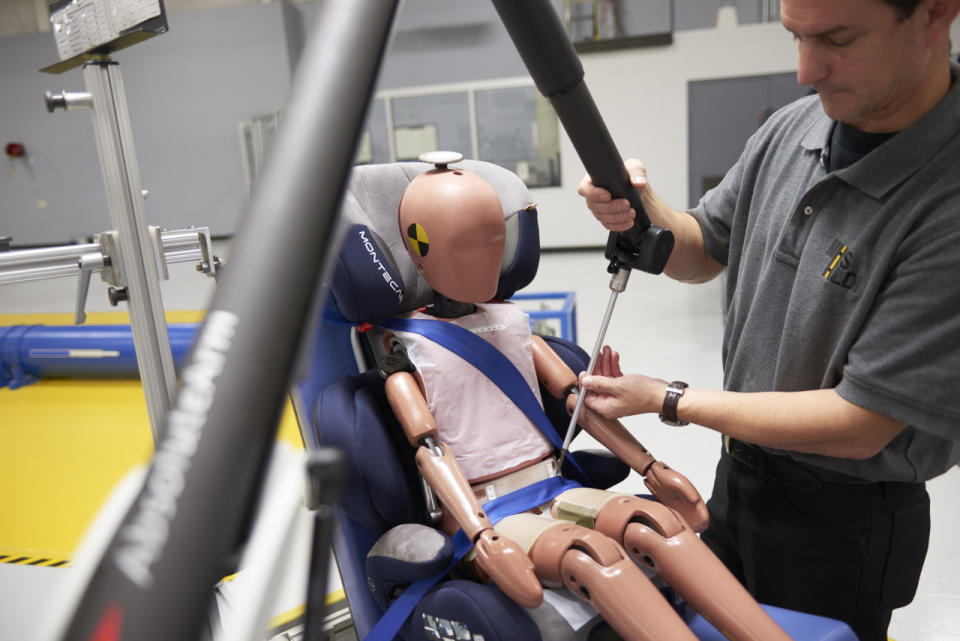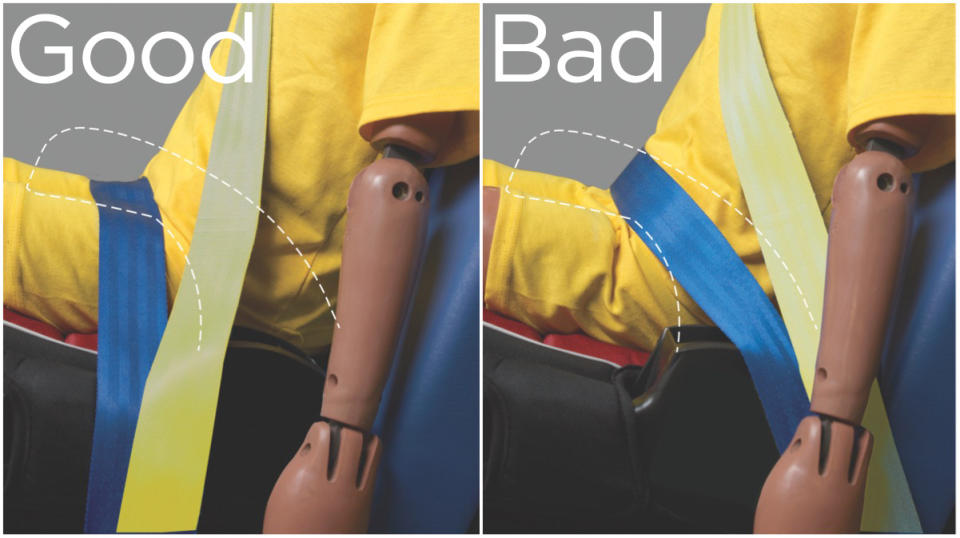Keep Your Kids Out Of These Six Booster Seats, IIHS Says

In new tests of car booster seats, the insurance industry’s safety arm has found six it deems unsafe enough to call on their makers to stop production—and for parents to immediately find alternatives.
In children aged between 4 and 8, a booster seat reduces the likelihood of being injured in a car accident by 45 percent, says the Insurance Institute for Highway Safety. The IIHS released its latest ratings today on booster seats, and noted that of the 23 new models evaluated, 20 earned the highest rating of “best bet” while the remaining three earned ratings of “good bet.” A “best bet” denotes a model that will ensure correct fitment of the seatbelt in just about any car, truck, SUV or minivan. A “good bet” indicates an acceptable fit in most types of vehicles.
The ones not recommended by the IIHS, however, are carryover models from past years—boosters that “don’t provide good belt fit, the main job boosters are supposed to do.” These seats are still being sold, and the IIHS is calling for manufacturers to cease production.
The six boosters that failed IIHS’ test are as follows:
Diono Olympia
Diono Pacifica
Eddie Bauer Deluxe Highback 65
Safety 1st All-in-One
Safety 1st Alpha Omega Elite
Safety 1st Summit 65
It’s worth noting that all three manufacturers do have alternative models ranked as “best bet.” In total, IIHS has 82 boosters with top ratings, eight with good ratings, 31 that should be tested with your specific child for correct fitment, and the six that you should avoid. (You can check out the full ratings list here.)
How can you tell if the fitment is correct? The belt should lay safely over the shoulder, not touching the neck, and not falling down the arm. The lap belt should also not rise up onto the tummy (see image below). In some cases, a child might not be old enough to ditch the booster seat until the age of 12, and IIHS recommends all younger children remain in harness-equipped restraints until at least the age of four.

Here’s how the IIHS describes its testing process:
“IIHS began issuing booster ratings after finding that many seats didn’t consistently provide good belt fit. The ratings are based on evaluations of how three-point lap and shoulder belts fit a child-size test dummy seated in the booster on a stationary test fixture. Measurements are taken under four conditions spanning the range of safety belt configurations in passenger vehicles. The evaluations focus on belt fit and don’t involve crash tests.”
Contrary to what you’d imagine, expensive does not necessarily equate to safe. The Eddie Bower seat in the “not recommended” camp currently retails at Target for $119.99; Little Tikes Backless Booster is available at Walmart for just $12.99, and that remains an IIHS “best bet.”
“We hope manufacturers will move quickly to redesign or end production of the Not Recommended boosters,” says Jessica Jermakian, IIHS senior research scientist. “Our ratings have succeeded in getting child seat manufacturers to prioritize belt fit when they design boosters. The large number of ‘best bets’ on the market now makes it easier for parents to shop for a seat that will work for their child in virtually any vehicle.”
Naturally, there’s more to safety when it comes to booster seats than just IIHS’ ratings. For instance, the seat in which the booster is placed plays a large role; one study says that the child in the middle seat is 43 percent less likely to sustain injury in a crash compared to kids riding either side. Then there’s the backless booster versus those with backs debate; there’s no definitive study to suggest one style is better than the other, it all depends on your specific child and how they typically sit (for instance, if your child sleeps a lot in the car, a high backed booster with headrests might help keep them upright and ensure the belt remains in the correct location on the shoulder).
Most important: Don’t rush the graduation from a seat with harnesses to boosters without. And do your research; when the time comes to make the jump, avoiding these six boosters listed “not recommended” is likely a good start.

 Yahoo Autos
Yahoo Autos 